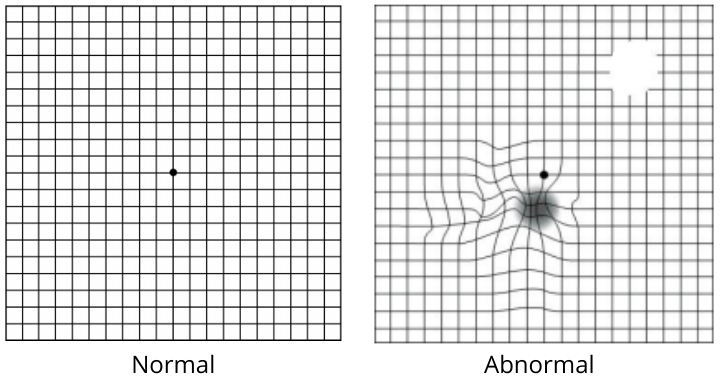Revealed: The Different Types of AMD That Can Threaten Your Vision

Read time: 3 minutes
As we mentioned in our related blog, Age-Related Macular Degeneration (AMD) is a condition that affects people as they age and can cause vision problems. It affects the macula, which is the part of the eye that helps you see things clearly in the center of your vision. There are two main types of AMD: dry and wet. What makes them different?
Dry AMD
Dry AMD, also known as geographic atrophy, is the most common type. It happens when the macula becomes thinner over time due to the buildup of waste material called drusen. This can lead to damage in the macula and make it harder to see things clearly, especially when reading or recognizing faces.
Symptoms of dry AMD include:
- gradual loss of central vision
- difficulty reading
- needing brighter light to see
There's no cure for dry AMD, but there are ways to slow down its progression and preserve vision, such as taking high doses of antioxidants using low vision aids, or surgery to implant a telescopic lens.
Wet AMD
Wet AMD, also called neovascular AMD (literally “new vessels”), is less common but more serious. It happens when new blood vessels form under the macula and leak fluid or blood, causing damage to the macula and rapid loss of central vision.
Symptoms of wet AMD include:
- sudden or rapid loss of central vision
- dark or empty areas in the center of vision
- distorted vision
There's no cure for wet AMD, either, however, treatments may include anti-VEGF therapy, photodynamic therapy, laser therapy, or low-vision aids. Early diagnosis is key, so make sure to have your eyes checked regularly if you're over the age of 50 and watch for symptoms of AMD.
The Amsler Grid
Often used at home when AMD is suspected, the Amsler Grid, pictured above, is a test for macular degeneration. Used since 1945, it’s a grid of horizontal and vertical lines used to monitor a person's central visual field. It is a diagnostic tool that aids in the detection of visual disturbances caused by changes in the retina, particularly the macula, such as age-related macular degeneration. In the test, the person looks with each eye separately at the small dot in the center of the grid. Patients with macular disease may see wavy lines or some lines may be missing.
How to help protect your eyesight from AMD
Early diagnosis is key, so make sure to have your eyes checked regularly by your optometrist at Urban Optiks. Keep an eye out for signs and symptoms of AMD, such as difficulty reading or seeing objects clearly. Your medical history and family history are important factors in determining your risk for developing AMD.
Your optometrist will perform a variety of tests to check your vision, and if they suspect AMD, they may refer you to a specialist for more tests. The specialist can determine the type and stage of your AMD and the best treatment for you.
Remember, our focus is on helping you see better!
Share this blog post on social or with a friend:
The information provided in this article is intended for general knowledge and educational purposes only and should not be construed as medical advice. It is strongly recommended to consult with an eye care professional for personalized recommendations and guidance regarding your individual needs and eye health concerns.
All of Urban Optiks Optometry's blog posts and articles contain information carefully curated from openly sourced materials available in the public domain. We strive to ensure the accuracy and relevance of the information provided. For a comprehensive understanding of our practices and to read our full disclosure statement, please click here.


















